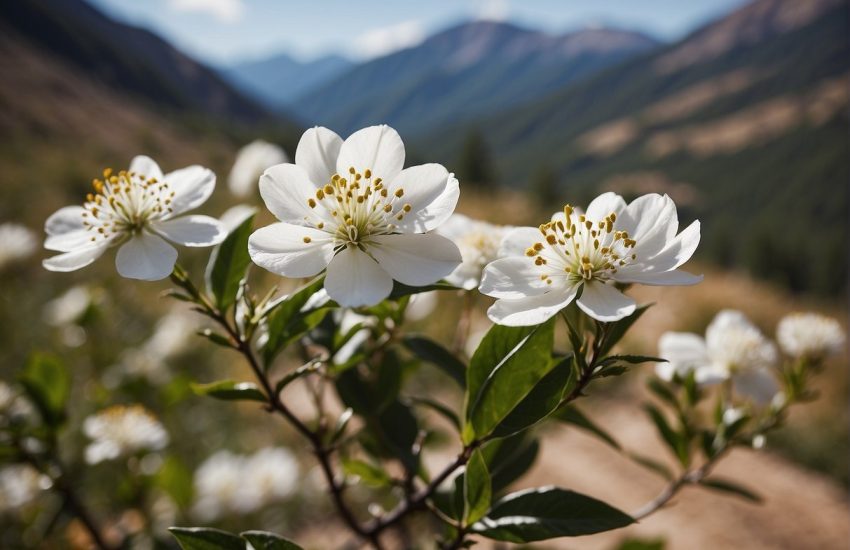White Flowering Trees in PA: A Guide to the Best Varieties for Your Landscape
Pennsylvania is home to a variety of stunning trees, but few can match the beauty of white flowering trees. These trees, which bloom with delicate white flowers in the spring, are a sight to behold and can be found throughout the state. They are popular among homeowners and landscapers alike, and for good reason.

One of the most popular white flowering trees in Pennsylvania is the dogwood. This tree is known for its showy white or pink flowers, which bloom in the spring and are often accompanied by bright green leaves. Dogwoods are relatively small trees, making them a great choice for smaller yards or as a focal point in a larger landscape. They are also relatively easy to care for, making them a popular choice among homeowners.
Another popular white flowering tree in Pennsylvania is the magnolia. Magnolias are known for their large, fragrant flowers, which can be white, pink, or purple. They are often used as specimen trees or as part of a larger landscape design. Magnolias can be a bit more finicky than other trees, but with the right care, they can thrive in Pennsylvania’s climate. Overall, white flowering trees are a beautiful addition to any landscape, and Pennsylvania is lucky to have so many great options to choose from.
Popular White Flowering Trees in PA

Pennsylvania is home to a variety of beautiful white flowering trees that bloom in different seasons, adding to the beauty of the landscape and gardens. In this section, we will explore some of the popular white flowering trees in PA.
Dogwood Varieties
Dogwoods are one of the most popular ornamental trees in the Eastern United States. The flowering dogwood (Cornus florida) is a deciduous tree that blooms in the spring with showy white or pink bracts. It grows up to 30 feet tall and is often used as a specimen tree in landscapes. Other dogwood varieties that produce white blooms include Kousa dogwood (Cornus kousa) and the hybrid Stellar Pink (Cornus x rutgersensis), which produces large, white flowers in the spring.
Magnolia Species
Magnolias are another popular group of trees that produce beautiful white blooms. The star magnolia (Magnolia stellata) is a deciduous tree that blooms in early spring with fragrant, star-shaped white flowers. The Saucer magnolia (Magnolia x soulangeana) is a hybrid that produces large, cup-shaped white flowers with pink or purple hues. Other notable magnolia species that produce white blooms include the Southern magnolia (Magnolia grandiflora) and the Cucumber tree (Magnolia acuminata).
Other Notable Species
In addition to dogwoods and magnolias, there are several other white flowering trees that are worth mentioning. The Hawthorn (Crataegus species) is a small, deciduous tree that produces clusters of white flowers in the spring. The Serviceberry (Amelanchier species) is a multi-stemmed shrub or small tree that produces white flowers in early spring. The Fringe tree (Chionanthus virginicus) is a small, deciduous tree that produces fragrant, white, fringe-like flowers in the spring. The Eastern Redbud (Cercis canadensis) is a small, deciduous tree that produces clusters of pink or white flowers in the spring.
Overall, white flowering trees are a great addition to any landscape or garden. They not only provide beauty but also support wildlife and habitats. When selecting a white flowering tree, it is important to consider the climate and species that are native to North America and the Eastern United States.
Caring for White Flowering Trees

White flowering trees are a beautiful addition to any garden or landscape. They not only add aesthetic appeal but also provide a host of benefits such as erosion control, habitat for pollinators, and shade. However, to ensure that these trees remain healthy and vibrant, proper care and maintenance are essential.
Soil and Sunlight Requirements
White flowering trees thrive in full sun and well-drained soils. They prefer slightly acidic soils with a pH of 6.0 to 6.5. It is important to avoid planting these trees in areas with wet soil or shade as it can lead to poor growth and development.
Pruning and Maintenance
Regular pruning is necessary to maintain the shape and health of white flowering trees. It is recommended to prune these trees in late winter or early spring before new growth appears. Dead or diseased branches should be removed promptly to prevent the spread of disease. Low-maintenance white flowering trees such as dogwood and magnolia require minimal pruning.
Disease and Pest Management
White flowering trees are susceptible to various diseases and pests. It is important to keep an eye out for signs of disease such as wilting, yellowing leaves, and cankers. Regularly inspecting the tree and removing any diseased or infected parts can prevent the spread of disease. Pests such as aphids, scales, and spider mites can also cause damage to white flowering trees. Insecticidal soaps and horticultural oils can be used to control these pests.
In conclusion, caring for white flowering trees requires proper soil and sunlight requirements, regular pruning and maintenance, and disease and pest management. By following these guidelines, you can ensure that your white flowering trees remain healthy and beautiful for years to come.


